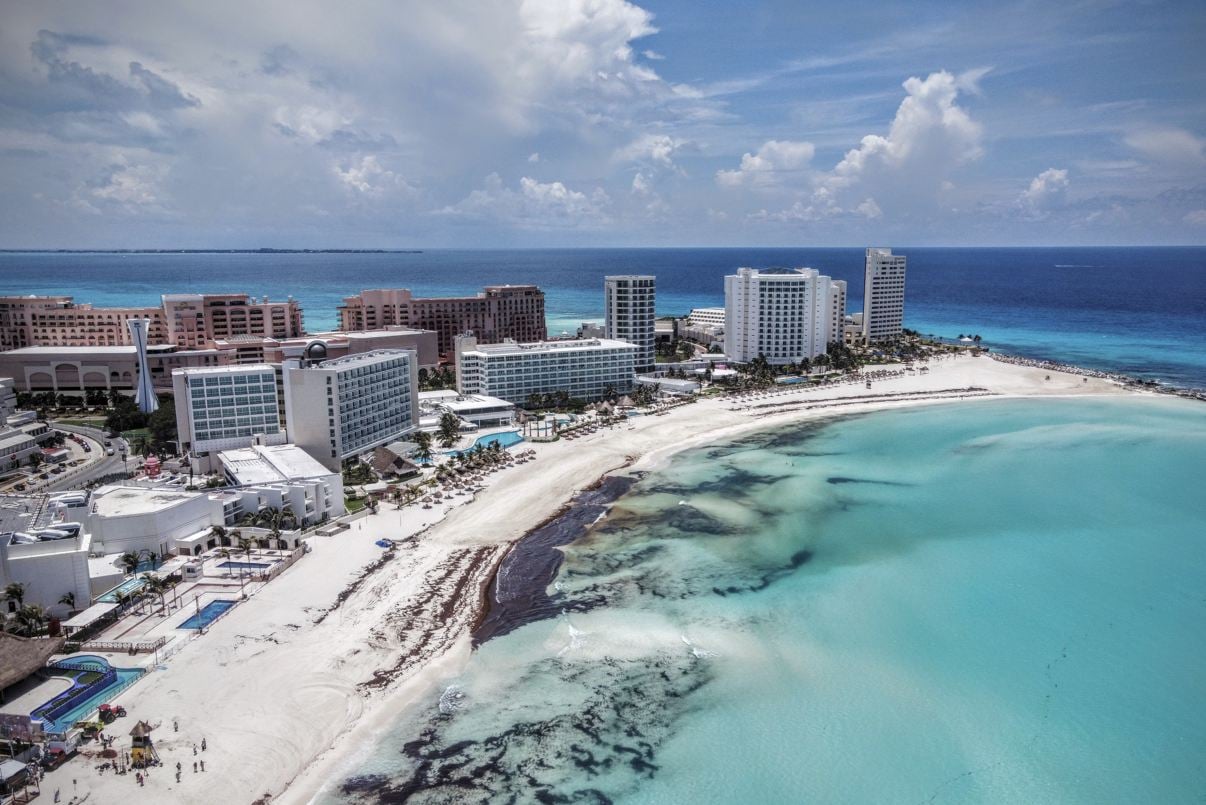
Share The Article
Get ready for a potentially messy summer at some of your favorite beaches. Scientists are saying that the amount of seaweed floating in the tropical Atlantic and Caribbean Sea has hit an all-time high this April, and that could mean a significant sargassum season for places like Florida and Cancun.
Sargassum is a brown seaweed that floats in large mats on the ocean’s surface and can sometimes wash ashore in massive quantities, impacting pristine beaches and vacation plans.


Record-Breaking Seaweed Levels
New data from the University of South Florida’s Optical Oceanography Lab (OOL) has revealed some pretty staggering numbers. According to their monitoring, the sargassum bloom in April was a whopping 40% larger than the previous record set in June 2022. To put that into perspective, we’re talking about roughly 30 million metric tons of the brown macroalgae currently swirling around out there. Dr. Chuanmin Hu, an oceanography professor at USF, described it simply as “huge,” emphasizing just how much higher this year’s levels are compared to past records.


What Does This Mean for Beaches?
If you’ve been to the beaches in South Florida or Cancun in recent years, you’ve probably seen or even waded through mats of sargassum. While some seaweed is a natural part of the ocean ecosystem, these massive blooms can cause major headaches. The OOL’s April bulletin suggests that, just like in previous years, the amount of sargassum is expected to keep growing in May across most of the Caribbean Sea and the Gulf of Mexico.


When Could We See It?
Predicting exactly when the seaweed will hit the beach is tricky. There are just so many factors that influence its movement and growth. For now, Dr. Hu says that most of the sargassum is still quite far away. While there’s a moderate amount in the western Caribbean Sea, it could take a month or even longer for that to reach Florida. So, while the record levels are concerning, a massive influx might not be immediate.


Understanding the Seaweed Surge: What to Expect on Your Beach Trip
Scientists are still piecing together why we’re seeing so much more sargassum, but it boils down to the seaweed loving sunshine and nutrients in the water. Stronger winds might be bringing more of this “food” to the surface, and warmer ocean temperatures act like a greenhouse, helping it grow faster. What this means for your trip: Be prepared for the possibility of more seaweed on the beaches than you might have seen in the past. This could range from scattered patches to significant accumulations, potentially affecting your ability to walk freely on the sand and swim in the clear water. Check recent beach conditions reports online or ask your hotel for the latest updates before heading out for the day.


Climate Change and Your Future Beach Vacations: Planning Ahead
The increasing prevalence of large sargassum blooms might be linked to broader climate changes, particularly warmer ocean temperatures. This could unfortunately mean that significant seaweed events become more common in the future.
What this means for your trip planning: For this trip and future ones, it’s wise to be flexible. Consider booking accommodations with good pool facilities as an alternative to the beach on heavy seaweed days. Look into resorts or areas known for more proactive seaweed management efforts. If your travel dates are flexible, you might even consider traveling during months that historically see less sargassum.


Dealing with Sargassum: Making the Most of Your Beach Time
While sargassum plays a small role in the ocean’s health, large amounts on the beach can be a nuisance. Expect it to be brown and potentially have a noticeable smell as it decomposes. Walking through thick piles can be difficult, and swimming might be less enjoyable. Local authorities often work hard to clean the beaches, but this can sometimes involve heavy machinery and temporarily restrict access to certain areas.
What this means for your beach time: Pack appropriate footwear if you plan to walk on the beach. Be patient with cleanup efforts and consider spending time at the pool or exploring other local attractions on days with heavy seaweed. Check with your hotel about their beach cleaning schedule and if they provide any amenities or services to help guests navigate the sargassum.


So, while the idea of record-breaking seaweed washing ashore in Florida and Cancun might not be the souvenir you were hoping for, it’s the reality of the 2025 sargassum season. By staying informed, being flexible with your beach plans, and understanding the ongoing efforts to manage this natural phenomenon, you can still make the most of your tropical getaway. Keep an eye on local reports, pack your sandals, and remember that even with a bit of extra seaweed, the sun, sand, and sea still hold their undeniable appeal.
To play it safe for clearer waters and pristine beaches, aiming for travel from November through early spring (roughly November to March) traditionally offers a higher chance of avoiding significant sargassum blooms in Florida and Cancun.
Ready For Your Trip? Check The Latest Entry Requirements For Your Destination Here
↓ Elevate Your Travel↓
Sign Up Now For Travel Off Path Premium! No ads, VIP Content, Personal Travel Concierge, Huge Savings, Daily Deals, Members Forum & More!


️Join Our Travel Off Path Community Forum: Where travelers unite, ask questions, share experiences and even find like-minded travel buddies!
SUBSCRIBE TO OUR LATEST POSTS
Enter your email address to subscribe to Travel Off Path’s latest breaking travel news, straight to your inbox.
This article originally appeared on TravelOffPath.com
Opinions expressed here are the author’s alone, not those of any bank, credit card issuer, hotel, airline, or other entity. This content has not been reviewed, approved or otherwise endorsed by any of the entities included within the post.
Please visit:
Our Sponsor
